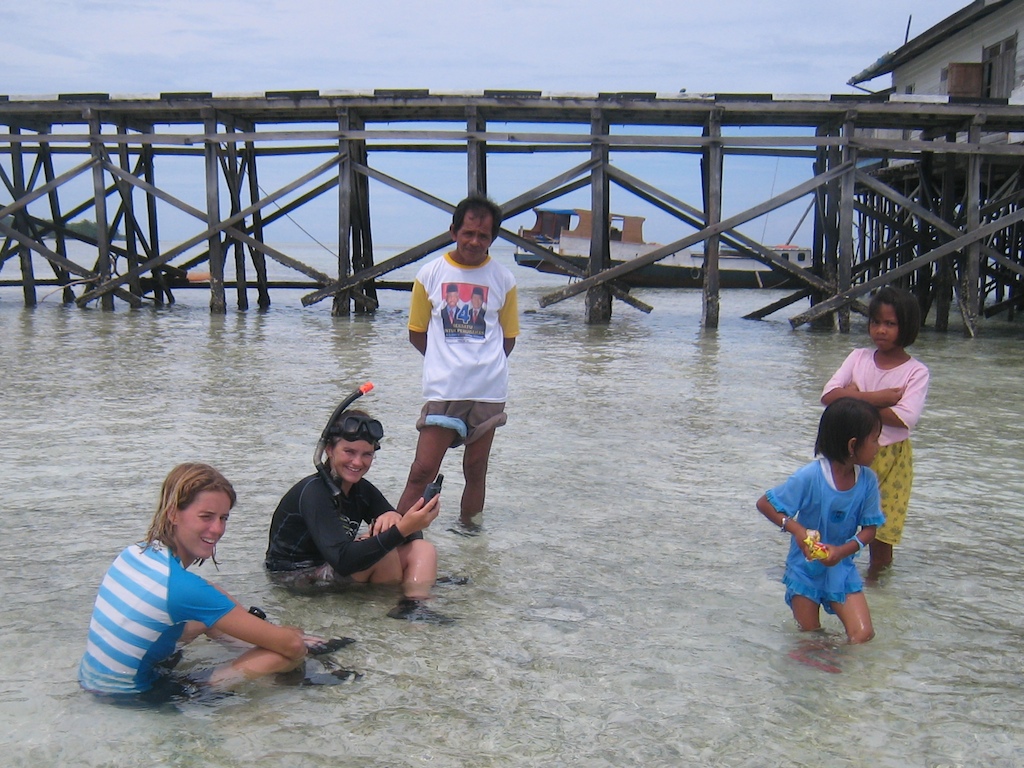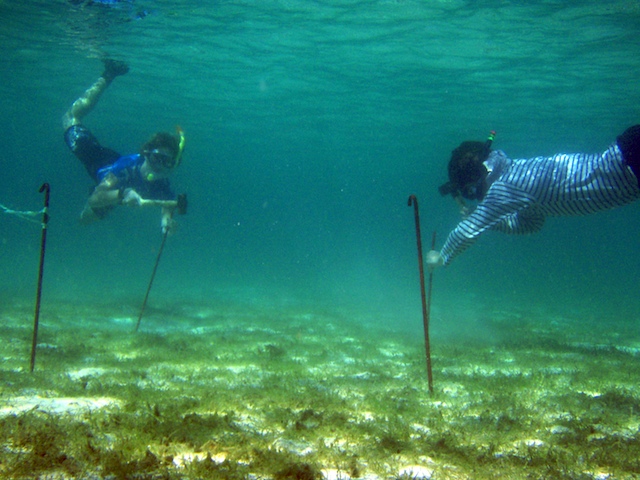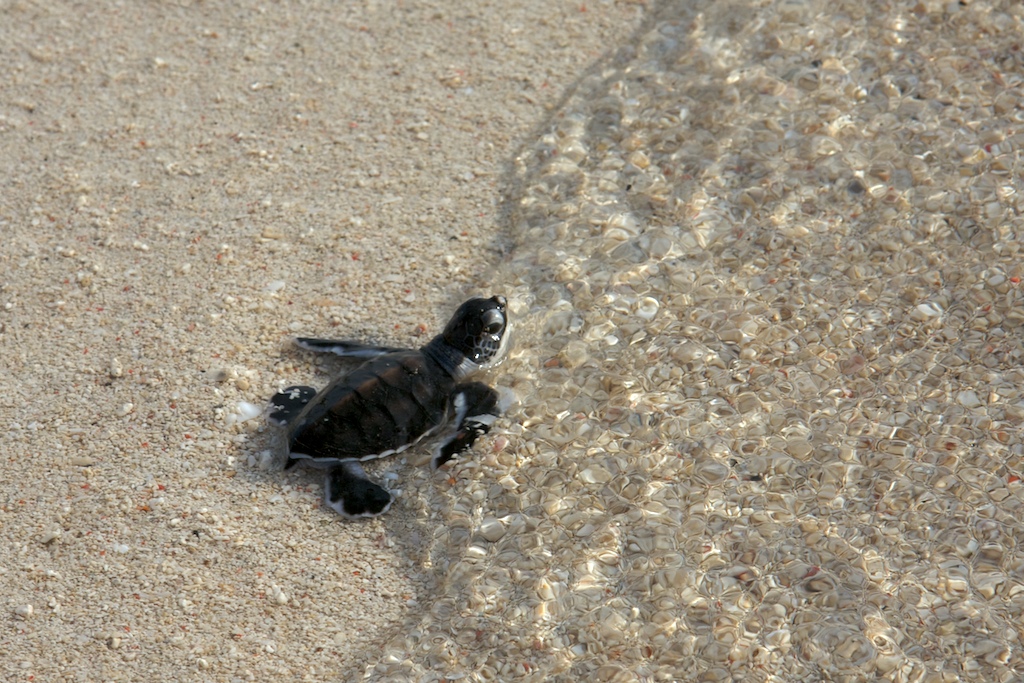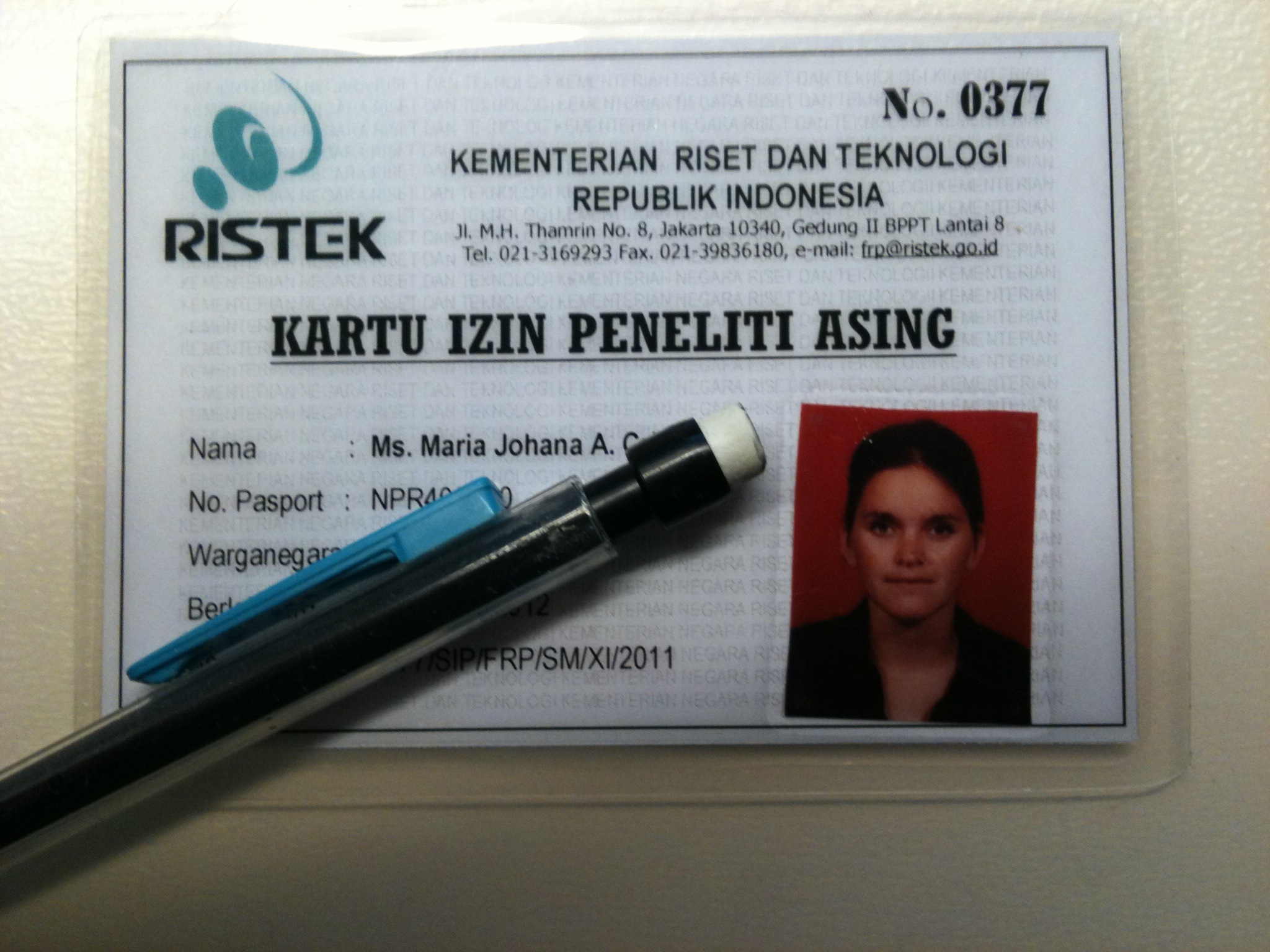Time is flying. The enclosure experiment is finished and Laura and Madelon left for their holidays. Time for me to visit the civilized world and put some pictures on the internet. It isn’t very structured but that is because only emailing this pictures costed me 1 1/2 a small discription can be found next to the pictures. The last 3 weeks will be spend on performing an NH4 toxicity experiment and a comparison of seagrass productivity at an island close to the river compared to an island far from the river.
Berau and Monkeys
Time for a presentatie for WWF, TNC and the local goverment in Berau about our research in Derawan. After a morning with presentations (Nina thanks for the translation in Bahasa Indonesia) and a very nice discussion it was time for a afternoon of jungle. We rented a boat and drove 0,5 hours from Berau to a small river where it was seeming with monkeys. The “Orang Belanda” Proboscis monkey was there and 4 other species. Not al pictures are sharp but more for the archives 🙂
Ongoing fieldwork
Two months into my first research period I would like to update you on my progress. Because it’s almost impossible to post from my research location on Derawan I will show a compilation of photo’s. When I will be back in the Netherlands I will elaborate some more on the specific experiments. Click on the photo for all the research photo’s.
Turtles @ Derawan
In the first week at Derawan I saw so many turtles, therefore a post about the “production of new turtles”. Yesterday night I saw 4 turtles (Chelonia mydas) crawling on the beach to search for a suitable site to lay their eggs above the high tide line.
She digged out a large hole in the surface of the beach using a swimming movement of her front flippers, creating the “body pit”. After ten minutes or more, actively throwing sand behind her, she beginned digging with her hind limbs, excavating the egg chamber of about 60 cm deep. Without pausing she continued laying 90 ‘ping-pong-sized-eggs’ (While the eggs are being deposited into the egg chamber, they can tolerate bouncing, rolling, tumbling or handling, but about two hours after being laid, the embryo will resume development, and may be killed by a simple roll of the egg.) Ferry from the WWF digged up the eggs to protect them from poachers. Now we have to wait 45-70 days for the small Tukik (turtle hatchling in Bahasa Indonesia) to hatch. Higher temperatures produce more females and result in shorter incubation periods. At Derawan Ferry will check development of the nests so that he can digg the eggs out and release the small flippering friends before poachers or predators find them.
After nesting, the female went back to the coral reef to rest and complete the next clutch of eggs. They are known to mainly rely on their stored fat reserved while resting and completing the next clutch of eggs. She can lay several clutches of eggs at approximately two-week intervals before finally migrating back to her feeding ground. We are still in doubt if the mother turtles are the same ones grazing on the seagrass fields in front of Derawan at daytime, or if they only visit this Island to lay their eggs and travel back to their feeding ground.
My first cage
Before my supervisors arrive and the experiment will be started I’m first testing my cage set-up. The cages are build out of concrete-iron with fishing nets on the sides and on top of the cage, attached by cable ties. The net is 5cm in diameter to prevent the turtles from getting stuck into the net. Within the cage I’ve tested the best way to sample, harvest and count the seagrass shoots. And also tested how long it takes for the seagrass leaves to grow back. The locals are very interested in the strange things that I’m doing underwater so it’s never boring. I’m leaving to Balikpapan know to pick up my supervisors and check the seagrass in Balikpapan bay and after that the experiment can start. Finally! Click on the photo for more pictures.
1st week pilot Derawan
The first days I’m testing the set-up of my experiment, I’m snorkeling 4 hours a day to check out the seagrass and the turtles here (also found dugong grazing trails!), and I’m talking to officials here and setting up logistics at this island. The 21th of May my supervisors and students are arriving so I will travel back to Balikpapan to pick them up and do some measurements at Balikpapan bay.
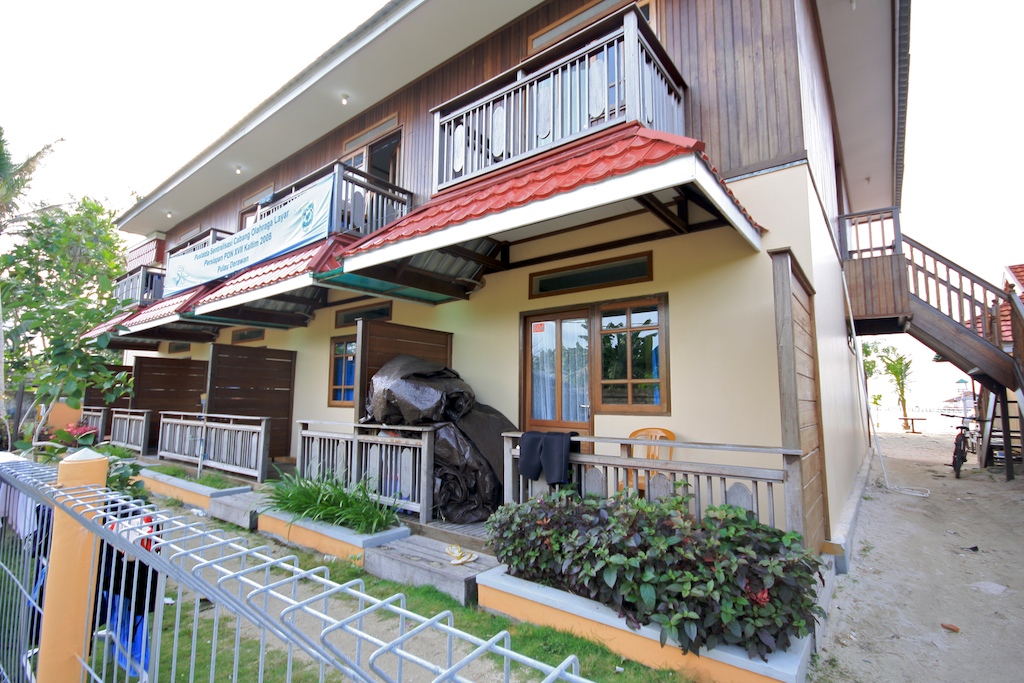
At this moment I’m staying at Derawan Beach Cafe. It’s a convenient place with very kind people, good food (with vegetables, and nasi goreng as breakfast) 24hrs power, airco and a toilet to sit on. The only question is if I can stay here until september because the 300.000rp per night.
Transport of research materials Balikpapan-Derawan
Trying to find all the materials needed for research is one thing. Transporting them to Derawan is really much more adventurous. The rainy season is not over yet and the road between Samarinda and Berau is in bad condition and sometimes not excisting anymore. But this is the only way to get your stuff (if you’re also transporting liquids) to Derawan.
So I chartered a car with driver, to get from Balikpapan to Derawan, like a Kijang (but next time I will charter a 4×4 car) This costed me 3,5 million rupiah and 36 hours travelling (you see why below!), sharing my chair with Dani, my assistent from Balikpapan. After this we arrived at Tanjung Batu at low tide, so I had to spend the night at the only losmen and take the boat to Derawan the next day 48 hours from the start of the journey.
The other option is to send your materials with air cargo (Balikpapan-Berau and than arrange transport to Derawan via Tanjung Batu by car), which will cost 3000 rupiah/kilo excl car.

Collecting materials for experiment 1
Before I can start with experiment 1, I have to start from scratch with the collection of the materials which are needed to start experiment 1. The family of the homestay in Balikpapan are pro-actively helping me with every weird thing that I carry to their house. After showering I exitedly noticed that the father of the house already started cutting the 360 pieces of steel.
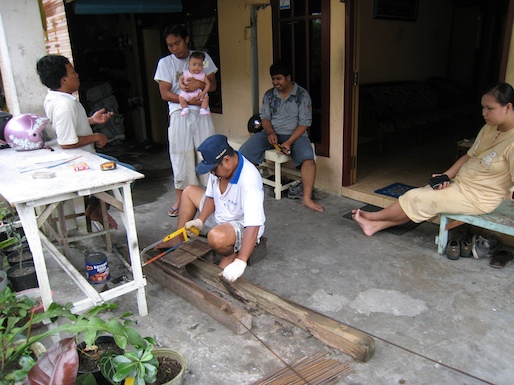
Procedure Research Permit Indonesia
I wrote a “Indonesian Visa & Research permit procedure for Dummies Guide” to help you find your way when you have to do al of this by yourself (updated in 2011, PDF).
Currently the instruction are stated clear at this site of RISTEK
Hello Jakarta!
I just want to let you know that me and my bagage arrived safely in Jakarta after a 23hr trip. The last 6 days (with much more to come) Wawan his daugher and I spend many hours arranging documents to get my Research Permit for the next 6 months. This picture gives you an idea of the daily panorama that I have to observate. When I finish this procedure I will publish a manual how to get this visa, because the procedure has changed after 15 december 2007. Sampai lagi!

